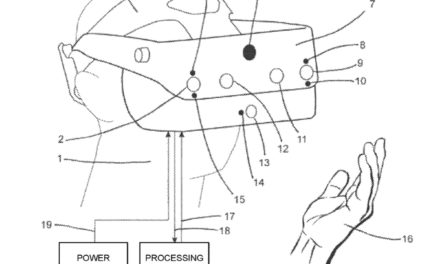Apparently the click wheel may have some life left in it yet. An Apple patent (number 20110005845) for a touch sensing device having conductive nodes has appeared at the US Patent & Trademark Office.
The device can include a first structure having one or more conductive electrodes disposed on a surface opposite the structure’s touchable surface and a second structure having one or more conductive nodes disposed on a surface. The two surfaces can be placed with the conductive electrodes and conductive nodes facing each other in close proximity so that the electrodes and the nodes can form capacitive elements for sensing a touch on the touchable surface. Separately disposing the conductive nodes from the touchable surface structure can make the touch sensing device thin. An example touch sensing device can be a click wheel. The inventors are Steven Porter Hotelling and Stephen Paul Zadesky.
Here’s Apple’s background and summary of the invention: “There can be many factors that determine the size of compact portable electronic devices such as laptops, PDAs, media players, mobile phones, etc. In many cases, the size of the portable electronic device can be limited by the size of the operational components used therein. These components can include for example microprocessor chips, printed circuit boards, displays, memory chips, hard drives, batteries, interconnectivity circuitry, indicators, input mechanisms and the like. As such, there can be a desire to make these operational components smaller, thinner, more cost effective, and more power efficient, while maintaining or increasing their functionality to perform operations.
“There exist today many styles of input mechanisms for performing operations in a portable electronic device. The operations can generally correspond to moving objects and making selections. By way of example, the input mechanisms can include buttons, keys, dials, wheels, mice, trackballs, touch pads, joy sticks, touch screens and the like. Touch devices are becoming increasingly popular in portable electronic devices because of their ease and versatility of operation, their declining price as well as their space saving ability (e.g., planarity).
“Touch devices can allow a user to make selections and move objects by simply moving a finger (or stylus) relative to a touch sensing surface. In general, the touch device can recognize a touch and in some circumstances the characteristics of the touch and a host controller of the portable electronic device can interpret the touch data and thereafter perform action based on the touch data.
“Capacitive sensing is becoming an increasingly popular way to implement an input mechanism. However, although capacitive sensing devices can work well in portable electronic devices, improvements are still desired, such as thinner and power savings devices.
“This relates to a touch sensing device that can have conductive nodes for capacitive sensing. One device structure can have one or more conductive electrodes disposed on a surface opposite the structure’s touchable surface. Another device structure can have one or more conductive nodes disposed on a surface. The two surfaces can be placed opposite each other in close proximity so that the conductive electrodes and the conductive nodes can form capacitive elements for sensing a touch on the touchable surface. This can advantageously provide a thinner device that can realize power savings and performance improvements.”
— Dennis Sellers




